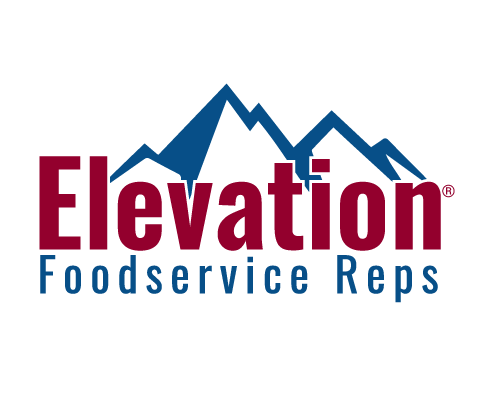ELEVATION NATION BLOG

Scaling Your Restaurant Menu to Meet Changing Diner Preferences
Trends and demands can quickly change how operations go to market in the restaurant and foodservice industry. In many ways, these trends are driven by ingredients and menu preferences.
Each year, the National Restaurant Association releases its What's Hot Culinary Forcast Report, which details all types of industry trends. Many of these are focused on flavors and menu development.
How Are Dining Preferences Changing?
A few factors have driven substantial changes in dining preferences in recent years. First, customers have become accustomed to ordering food to go or for delivery. What really gained popularity during the COVID pandemic -- the convenience of off-premise dining -- is still popular, though today's diners are also more value-driven than ever before. This has translated to some steering clear of delivery in favor of takeout to avoid expensive third-party delivery fees.
This doesn't mean that convenience, speed, and customization are out of fashion. In fact, it's quite the opposite. As a result, many foodservice and restaurant menu planners are considering how their items will translate to takeout, and they're taking the following consumer habits into consideration:
Time Constraints
As consumers increasingly find themselves pressed for time in their busy schedules, their dining habits reflect a desire for efficiency and convenience. This reality shapes not only the types of dishes restaurants offer but also the way menus are structured and presented. Quick-service options, grab-and-go items, and streamlined ordering processes cater to patrons seeking a speedy dining experience without compromising on quality.
Flexible Eating Patterns
For many years, the meal schedule was breakfast, lunch, and dinner. Millennials and younger generations are now opting to eat whenever is most convenient, which may be any time of day. For example, those who work later shifts or at night may want breakfast in the afternoon. Alternatively, someone may prefer dinner-type meals in the morning. A flexible work/life balance means food must adapt to keep up. Traditional meal times are fading fast, as are the ideas of what people eat during these periods.
Digital Ordering and Delivery
Apps are an integral part of modern life, and foodservice trends live or die based on how well they can cater to the app crowd. Almost all chain restaurants have apps where users can order food from their phones for pickup or delivery, and if they don't, third-parties will also make delivery possible. As we mentioned above, though, takeout is becoming more important than delivery, so digital ordering must also be convenient for pick up and not just delivery.
It Takes Equipment to Make Trends Successful
Foodservice equipment can play a large role in helping operators keep up with today's trends and meet consumer demands. Consider the following equipment types to help make operations easier:
Combination Ovens: Combination ovens offer versatility, efficiency, and precision cooking capabilities to help operators meet the demands of diverse menu offerings. Because combi ovens can provide versatility in a single footprint, they're ideal for maximizing kitchen space and streamlining operations.
High-Speed Cooking Equipment: High-speed cooking equipment enables rapid cooking times without compromising on food quality, catering to the growing preference for quick-service dining experiences and meeting the needs of time-constrained consumers seeking convenience without sacrificing taste.
Ventless Cooking Equipment: Ventless cooking equipment provides flexibility in kitchen design and placement, enabling foodservice operators to expand their offerings in non-traditional settings such as food trucks, pop-up restaurants, and small urban spaces, meeting the demand for innovative dining experiences in diverse locations.
Smart Kitchen Technology: Smart kitchen technology integrates automation, data analytics, and remote monitoring capabilities, empowering foodservice operators to enhance efficiency by optimizing workflows and maximizing overhead.
High-Speed Food Processors: High-speed food processors provide efficient and consistent food preparation, allowing foodservice operators to quickly process ingredients for customizable dishes, meet the demand for made-to-order and personalized menu items.
Get hands-on experience with the top foodservice equipment to discover how your restaurant's menu can increase profits and customer satisfaction:
Subscribe Here!
Lists by Topic
- Insider (16)
- Restaurants (15)
- Chef's Playground (12)
- Beverage (9)
- Trends (8)
- Bar (7)
- School cafeteria (7)
- Hospitality (6)
- LTI (5)
- Middleby (5)
- Steelite (5)
- Tabletop (5)
- Test Kitchen (4)
- TurboChef (4)
- C-Store (3)
- Coffee (3)
- CookTek (3)
- Glassware (3)
- COVID-19 (2)
- Concordia (2)
- Dinnerware (2)
- Front of House (2)
- Healthcare (2)
- Labor Savings (2)
- Lion's Wood Banquet Furniture (2)
- Take-Out/Delivery (2)
- American Metalcraft (1)
- Blodgett (1)
- Blodgett Combi (1)
- Bluezone (1)
- College & University (1)
- Concessions (1)
- Doyon (1)
- Eastern Tabletop (1)
- Follett (1)
- Globe (1)
- Grocery Store (1)
- Icetro (1)
- Imperial Range (1)
- Induction (1)
- Kloppenberg (1)
- MagiKitch’n (1)
- Middleby Marshall (1)
- News (1)
- Perfect Fry (1)
- Pitco (1)
- Product of the Month (1)
- Star (1)
- U-Line (1)
- Varimixer (1)
- Ventless (1)

